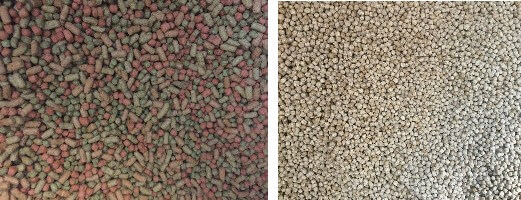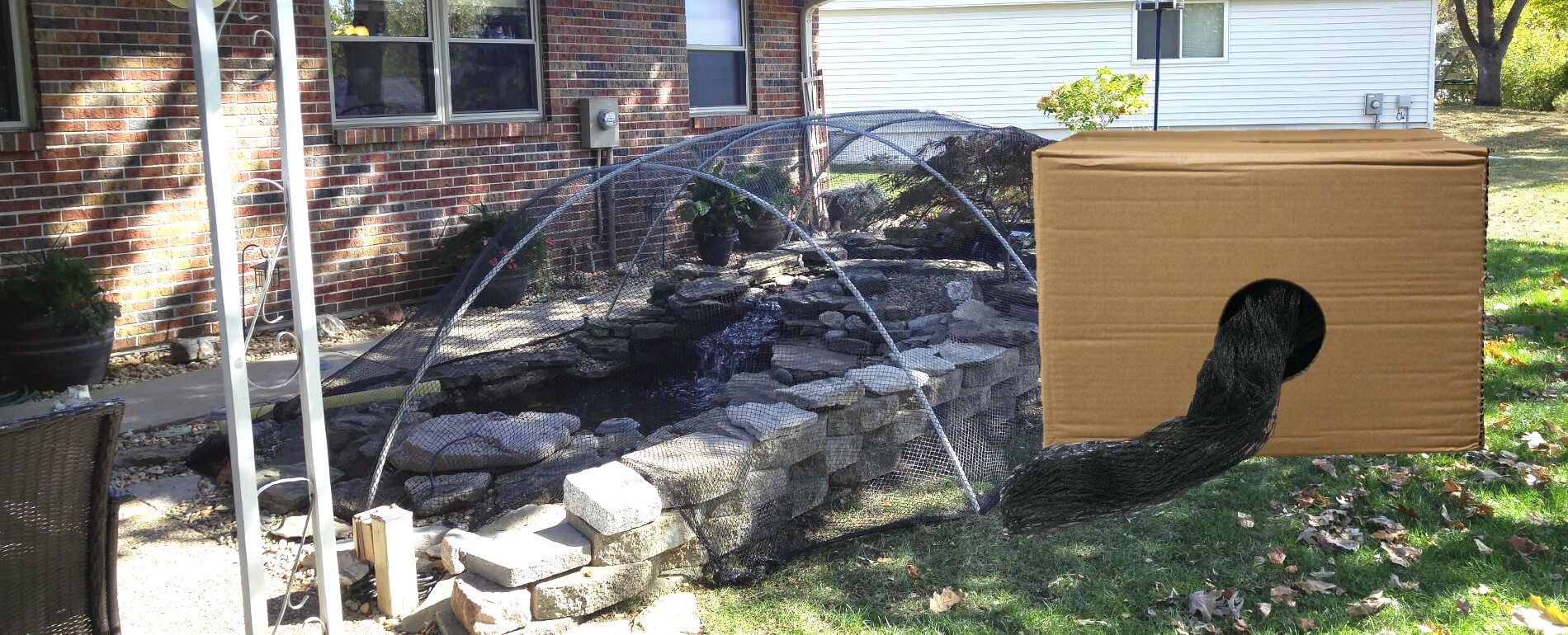Preparing the Pond and Water Feature for Winter
Wow…Leaves may be starting to turn and drop. Where did summer go? In the Midwest, summer never really got started and here we are reading about the upcoming fall and winter months. There is a lot of talk about “how to winterize” a pond, waterfall, or water feature. The question we get asked the most: “Is it time for cool weather food?”. Here are some answers:

It’s a great idea to set the pond up for winter so that when temperatures do finally plummet, you and your fish are prepared. There are 2 numbers that are important: 50 and 70. Once water temperatures fall below 70, it’s time to switch the koi and goldfish over to a cool weather food or spring and fall diet. Koi and goldfish have a hard time digesting high protein foods in cooler weather. A Wheat Germ food is easy for koi and goldfish to digest in cool weather. The more of the food koi and goldfish digest, the less waste they will produce, and therefore less algae and other gunk left in the pond. Once temperatures are closer to 50 degrees, most floating plants will begin to discolor and die. This is a good time to discard these types of plants. They make excellent compost. Since floating plants provide much needed cover for koi and goldfish, this is also a great time to get the pond net installed or pond cover installed over the pond. Some folks install pond netting and pond covers earlier depending on when leaves begin to fall. Pond nets and pond covers can be cumbersome to clean and store in spring months and in some cases, inexpensive pond netting or throw away net may be a better choice.

We all know that beneficial bacteria is key to a healthy pond. Cooler weather inhibits effectiveness of most brands and types of beneficial bacteria on the market. Along with keeping the pond balanced, it also keeps water healthy for fish and plants. Continuing to add beneficial bacteria though winter months seriously deceases the amount of work needed the next spring to open the pond up. Microbe Lift Autumn Winter Prep was one of the first cold water beneficial bacteria treatments on the market, and, is still arguably the best cold water beneficial bacteria treatment.

To Heat or not to Heat
Most “pond heaters” on the market are in fact de-icers. Heating the pond to a steady temperature during winter months is a very costly task. Installing a deicer that is thermostatically controlled to turn on below freezing is much more practical and maintains a hole in ice so ponds can breathe. Our most popular pond de-icer online only uses 100 watts of power! Using a pond de-icer is critical in ponds with fish. One important factor that many folks overlook is that koi and goldfish need to breathe, too. Whether the pump is left to run all winter or not, oxygen levels are depleted when the pond and waterfall are covered in ice. Pond air pumps, or aeration kits, are essential and ensure oxygen levels are not depleted during severe periods of freezing weather. Installing an air pump eliminates the need to worry about excessive organic debris, sludge, and algae decaying over winter months as well. When this stuff starts to break down, it can turn pond water toxic. Adding oxygen to the pond will ensure that koi and goldfish pull through because the oxygen dilutes the pollutants.

